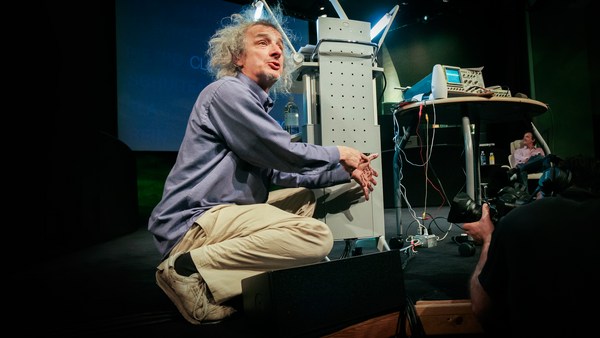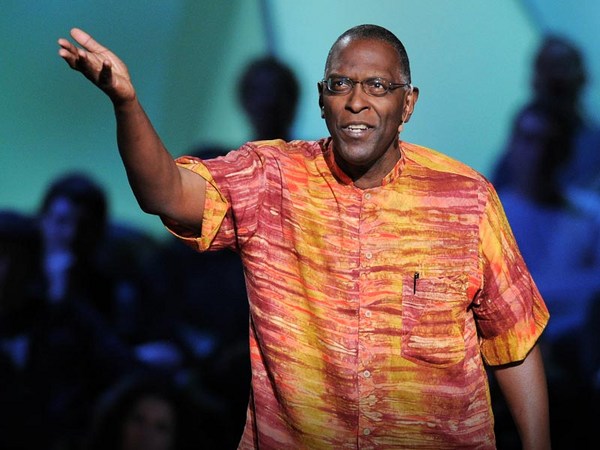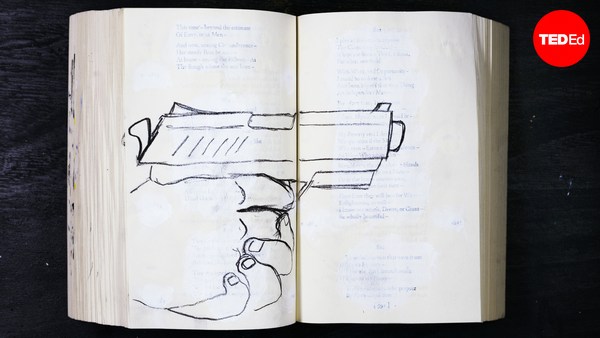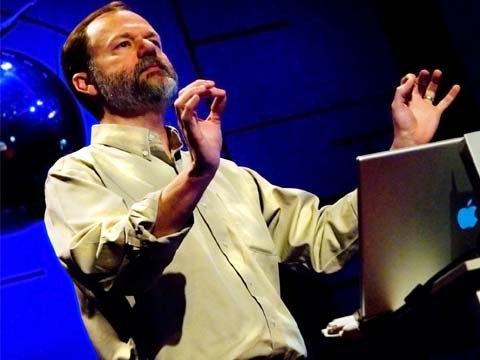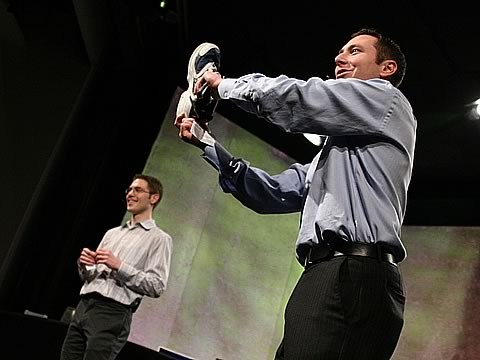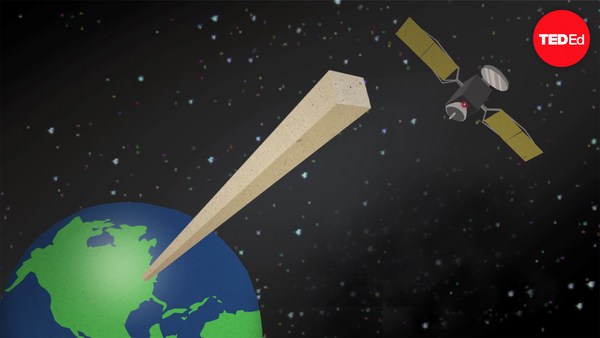My name is Arvind Gupta, and I'm a toymaker. I've been making toys for the last 30 years. The early '70s, I was in college. It was a very revolutionary time. It was a political ferment, so to say -- students out in the streets of Paris, revolting against authority. America was jolted by the anti-Vietnam movement, the Civil Rights movement. In India, we had the Naxalite movement, the [unclear] movement. But you know, when there is a political churning of society, it unleashes a lot of energy. The National Movement of India was testimony to that. Lots of people resigned from well-paid jobs and jumped into the National Movement. Now in the early '70s, one of the great programs in India was to revitalize primary science in village schools.
There was a person, Anil Sadgopal, did a Ph.D. from Caltech and returned back as a molecular biologist in India's cutting-edge research institute, the TIFR. At 31, he was not able to relate the kind of [unclear] research, which he was doing with the lives of the ordinary people. So he designed and went and started a village science program. Many people were inspired by this. The slogan of the early '70s was "Go to the people. Live with them; love them. Start from what they know. Build on what they have." This was kind of the defining slogan.
Well I took one year. I joined Telco, made TATA trucks, pretty close to Pune. I worked there for two years, and I realized that I was not born to make trucks. Often one doesn't know what one wants to do, but it's good enough to know what you don't want to do. So I took one year off, and I went to this village science program. And it was a turning point. It was a very small village -- a weekly bazaar where people, just once in a week, they put in all the vats. So I said, "I'm going to spend a year over here." So I just bought one specimen of everything which was sold on the roadside. And one thing which I found was this black rubber.
This is called a cycle valve tube. When you pump in air in a bicycle, you use a bit of this. And some of these models -- so you take a bit of this cycle valve tube, you can put two matchsticks inside this, and you make a flexible joint. It's a joint of tubes. You start by teaching angles -- an acute angle, a right angle, an obtuse angle, a straight angle. It's like its own little coupling. If you have three of them, and you loop them together, well you make a triangle. With four, you make a square, you make a pentagon, you make a hexagon, you make all these kind of polygons. And they have some wonderful properties. If you look at the hexagon, for instance, it's like an amoeba, which is constantly changing its own profile. You can just pull this out, this becomes a rectangle. You give it a push, this becomes a parallelogram. But this is very shaky. Look at the pentagon, for instance, pull this out -- it becomes a boat shape trapezium. Push it and it becomes house shaped. This becomes an isosceles triangle -- again, very shaky. This square might look very square and prim. Give it a little push -- this becomes a rhombus. It becomes kite-shaped. But give a child a triangle, he can't do a thing to it.
Why use triangles? Because triangles are the only rigid structures. We can't make a bridge with squares because the train would come, it would start doing a jig. Ordinary people know about this because if you go to a village in India, they might not have gone to engineering college, but no one makes a roof placed like this. Because if they put tiles on top, it's just going to crash. They always make a triangular roof. Now this is people science.
And if you were to just poke a hole over here and put a third matchstick, you'll get a T joint. And if I were to poke all the three legs of this in the three vertices of this triangle, I would make a tetrahedron. So you make all these 3D shapes. You make a tetrahedron like this. And once you make these, you make a little house. Put this on top. You can make a joint of four. You can make a joint of six. You just need a ton. Now this was -- you make a joint of six, you make an icosahedron. You can play around with it. This makes an igloo. Now this is in 1978. I was a 24-year-old young engineer. And I thought this was so much better than making trucks. (Applause) If you, as a matter of fact, put four marbles inside, you simulate the molecular structure of methane, CH4. Four atoms of hydrogen, the four points of the tetrahedron, which means the little carbon atom.
Well since then, I just thought that I've been really privileged to go to over 2,000 schools in my country -- village schools, government schools, municipal schools, Ivy League schools -- I've been invited by most of them. And every time I go to a school, I see a gleam in the eyes of the children. I see hope. I see happiness in their faces. Children want to make things. Children want to do things.
Now this, we make lots and lots of pumps. Now this is a little pump with which you could inflate a balloon. It's a real pump. You could actually pop the balloon. And we have a slogan that the best thing a child can do with a toy is to break it. So all you do is -- it's a very kind of provocative statement -- this old bicycle tube and this old plastic [unclear] This filling cap will go very snugly into an old bicycle tube. And this is how you make a valve. You put a little sticky tape. This is one-way traffic. Well we make lots and lots of pumps. And this is the other one -- that you just take a straw, and you just put a stick inside and you make two half-cuts. Now this is what you do, is you bend both these legs into a triangle, and you just wrap some tape around. And this is the pump. And now, if you have this pump, it's like a great, great sprinkler. It's like a centrifuge. If you spin something, it tends to fly out.
(Applause)
Well in terms of -- if you were in Andhra Pradesh, you would make this with the palmyra leaf. Many of our folk toys have great science principles. If you spin-top something, it tends to fly out. If I do it with both hands, you can see this fun Mr. Flying Man. Right. This is a toy which is made from paper. It's amazing. There are four pictures. You see insects, you see frogs, snakes, eagles, butterflies, frogs, snakes, eagles. Here's a paper which you could [unclear] -- designed by a mathematician at Harvard in 1928, Arthur Stone, documented by Martin Gardner in many of his many books. But this is great fun for children. They all study about the food chain. The insects are eaten by the frogs; the frogs are eaten by the snakes; the snakes are eaten by the eagles. And this can be, if you had a whole photocopy paper -- A4 size paper -- you could be in a municipal school, you could be in a government school -- a paper, a scale and a pencil -- no glue, no scissors. In three minutes, you just fold this up. And what you could use it for is just limited by your imagination. If you take a smaller paper, you make a smaller flexagon. With a bigger one, you make a bigger one.
Now this is a pencil with a few slots over here. And you put a little fan here. And this is a hundred-year-old toy. There have been six major research papers on this. There's some grooves over here, you can see. And if I take a reed -- if I rub this, something very amazing happens. Six major research papers on this. As a matter of fact, Feynman, as a child, was very fascinated by this. He wrote a paper on this. And you don't need the three billion-dollar Hadron Collider for doing this. (Laughter) (Applause) This is there for every child, and every child can enjoy this. If you want to put a colored disk, well all these seven colors coalesce. And this is what Newton talked about 400 years back, that white light's made of seven colors, just by spinning this around.
This is a straw. What we've done, we've just sealed both the ends with tape, nipped the right corner and the bottom left corner, so there's holes in the opposite corners, there's a little hole over here. This is a kind of a blowing straw. I just put this inside this. There's a hole here, and I shut this. And this costs very little money to make -- great fun for children to do.
What we do is make a very simple electric motor. Now this is the simplest motor on Earth. The most expensive thing is the battery inside this. If you have a battery, it costs five cents to make it. This is an old bicycle tube, which gives you a broad rubber band, two safety pins. This is a permanent magnet. Whenever current flows through the coil, this becomes an electromagnet. It's the interaction of both these magnets which makes this motor spin. We made 30,000.
Teachers who have been teaching science for donkey years, they just muck up the definition and they spit it out. When teachers make it, children make it. You can see a gleam in their eye. They get a thrill of what science is all about. And this science is not a rich man's game. In a democratic country, science must reach to our most oppressed, to the most marginalized children. This program started with 16 schools and spread to 1,500 government schools. Over 100,000 children learn science this way. And we're just trying to see possibilities.
Look, this is the tetrapak -- awful materials from the point of view of the environment. There are six layers -- three layers of plastic, aluminum -- which are are sealed together. They are fused together, so you can't separate them. Now you can just make a little network like this and fold them and stick them together and make an icosahedron. So something which is trash, which is choking all the seabirds, you could just recycle this into a very, very joyous -- all the platonic solids can be made with things like this.
This is a little straw, and what you do is you just nip two corners here, and this becomes like a baby crocodile's mouth. You put this in your mouth, and you blow. (Honk) It's children's delight, a teacher's envy, as they say. You're not able to see how the sound is produced, because the thing which is vibrating goes inside my mouth. I'm going to keep this outside, to blow out. I'm going to suck in air. (Honk) So no one actually needs to muck up the production of sound with wire vibrations. The other is that you keep blowing at it, keep making the sound, and you keep cutting it. And something very, very nice happens. (Honk) (Applause) And when you get a very small one -- (Honk) This is what the kids teach you. You can also do this.
Well before I go any further, this is something worth sharing. This is a touching slate meant for blind children. This is strips of Velcro, this is my drawing slate, and this is my drawing pen, which is basically a film box. It's basically like a fisherman's line, a fishing line. And this is wool over here. If I crank the handle, all the wool goes inside. And what a blind child can do is to just draw this. Wool sticks on Velcro. There are 12 million blind children in our country -- (Applause) who live in a world of darkness. And this has come as a great boon to them. There's a factory out there making our children blind, not able to provide them with food, not able to provide them with vitamin A. But this has come as a great boon for them. There are no patents. Anyone can make it.
This is very, very simple. You can see, this is the generator. It's a crank generator. These are two magnets. This is a large pulley made by sandwiching rubber between two old CDs. Small pulley and two strong magnets. And this fiber turns a wire attached to an LED. If I spin this pulley, the small one's going to spin much faster. There will be a spinning magnetic field. Lines, of course, would be cut, the force will be generated. And you can see, this LED is going to glow. So this is a small crank generator.
Well, this is, again, it's just a ring, a steel ring with steel nuts. And what you can do is just, if you give it a twirl, well they just keep going on. And imagine a bunch of kids standing in a circle and just waiting for the steel ring to be passed on. And they'd be absolutely joyous playing with this.
Well in the end, what we can also do: we use a lot of old newspapers to make caps. This is worthy of Sachin Tendulkar. It's a great cricket cap. (Laughter) (Applause) When first you see Nehru and Gandhi, this is the Nehru cap -- just half a newspaper. We make lots of toys with newspapers, and this is one of them. And this is -- you can see -- this is a flapping bird. All of our old newspapers, we cut them into little squares. And if you have one of these birds -- children in Japan have been making this bird for many, many years. And you can see, this is a little fantail bird.
Well in the end, I'll just end with a story. This is called "The Captain's Hat Story." The captain was a captain of a sea-going ship. It goes very slowly. And there were lots of passengers on the ship, and they were getting bored, so the captain invited them on the deck. "Wear all your colorful clothes and sing and dance, and I'll provide you with good food and drinks." And the captain would wear a cap everyday and join in the regalia. The first day, it was a huge umbrella cap, like a captain's cap. That night, when the passengers would be sleeping, he would give it one more fold, and the second day, he would be wearing a fireman's cap -- with a little shoot just like a designer cap, because it protects the spinal cord. And the second night, he would take the same cap and give it another fold. And the third day, it would be a Shikari cap -- just like an adventurer's cap. And the third night, he would give it two more folds -- and this is a very, very famous cap. If you've seen any of our Bollywood films, this is what the policeman wears, it's called a zapalu cap. It's been catapulted to international glory.
And we must not forget that he was the captain of the ship. So that's a ship. And now the end: everyone was enjoying the journey very much. They were singing and dancing. Suddenly there was a storm and huge waves. And all the ship can do is to dance and pitch along with the waves. A huge wave comes and slaps the front and knocks it down. And another one comes and slaps the aft and knocks it down. And there's a third one over here. This swallows the bridge and knocks it down. And the ship sinks, and the captain has lost everything, but for a life jacket.
Thank you so much.
(Applause)
